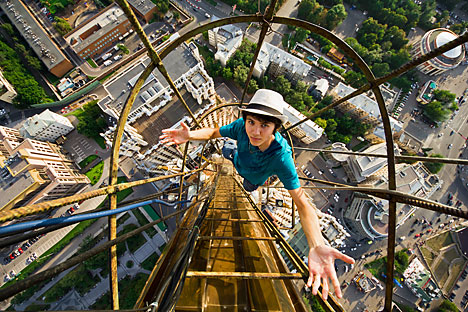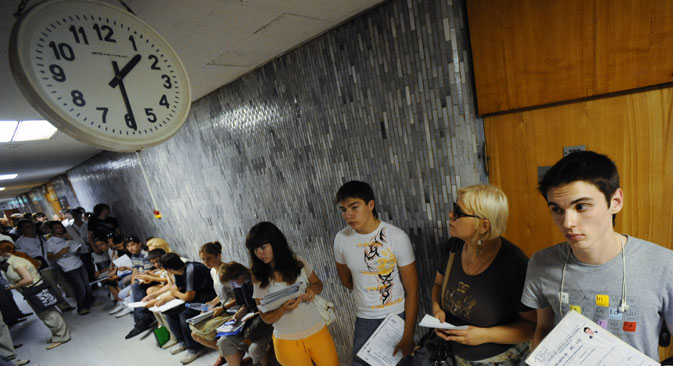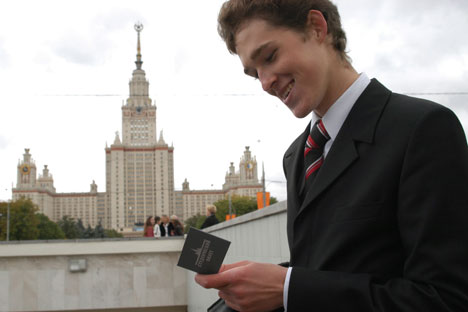Russia sets sights on high international university rankings

Moscow State University is Russia’s highest-ranked school in global ratings, but still has room to improve. Source: Legion Media
Since the start of the Program 5-100 two years ago, Russian universities have become more noticeable in the international education market, says Phil Baty, Editor-in-Chief of the Times Higher Education magazine (THE).
Program 5-100, which is subsidized by the state, funds 15 Russian universities, with an aim to increase their international competitiveness. By 2020, the Russian Ministry of Education and Science would like five universities from the country to be listed in the Top 100 of three world rankings: THE World University Rankings, QS World University Rankings and Academic Ranking of World Universities.
Only two Russian universities were included in the THE World University Rankings 2015. The California Institute of Technology and Harvard University occupied the top two positions (the list contains 400 universities and 108 of them are American).
The QS World University Rankings contains 21 Russian universities. The Lomonosov Moscow State University and the Saint-Petersburg State University are in 114th and 233rd places respectively from more than 700 institutions. In 2013, there were 18 Russian universities and in 2012 there were 14. In the 2014-15 rating, the U.S. is represented by 150 educational institutes with the Massachusetts Institute of Technology taking 1st place.
Irina Abankina, director of the Institute of Education Development at the Higher School of Economics (ranked 501 in the QS 2014-15 ranking), says the Ministry of Education and Science intends to single out the universities with the most potential and redistribute funds to them.
Abankina adds that currently about 40 percent of the ministry's budget is being spent on about 35 select universities. Besides the 15 universities that are part of the Program 5-100, the select category consists of federal and national research universities. In 2015, Program 5-100 universities will receive a total of 10.14 billion rubles.
When asked if he is satisfied with the program's intermediate results, Dmitri Livanov, Russia’s Education Minister said, “very little time has passed so far for the government to transform the universities and increase the quality of their work.” Livanov was the rector of one of the Program 5-100's participants, The National University of Science and Technology MISiS. The minister hopes that the universities will demonstrate substantial progress in the 2016-17 academic year.
Nevertheless, some conclusions can already be reached. According to Phil Baty, in the last several years the Moscow State University has shown considerable progress. It is in 25th place in the THE World Reputation Rankings 2015. The university is not participating in Program 5-100, but Abankina says it intensively collaborates with expert groups.
THE's Editor-in-Chief did not reveal the details of the 2015-16 rating, which will be published on October 1 this year, but said that, since Moscow State University has been making impressive strides up the rankings recently, he “predicts it will see further good news when we publish the world university rankings for 2015-2016.”
Abankina says the Novosibirsk State University (Within the top 350 in the Times rankings) is dynamically moving up the rankings. “The National Research Nuclear University is also doing very well,” she adds. “This is a unique university, but it still needs to make various efforts in order to progress. With their strategy they have reached the peak of their development. That is why they need new ideas.”
A Program 5-100 spokesman says that besides their progression in the rankings, the universities' progress can be determined by “the qualitative changes that will yield fruit in the nearest future.” For example, in the last two years nine of the 15 universities participating in the program have doubled the number of scientific publications.
“The biggest challenge is whether or not the reform and investment program goes far enough,” says Phil Baty. He adds that many other developing countries have recognized the importance of investing in their universities to drive the knowledge economy. “It takes great effort just to stand still in the global race, and of course leading western universities have built huge endowments and can attract higher levels of private funding,” Baty adds.
Russia must work hard to attract and retain leading global talent from across the world, Baty says. “Too many great Russian scholars in the past left Russia to pursue their careers elsewhere. This must change. The reforms recognize this.”
All rights reserved by Rossiyskaya Gazeta.
Subscribe
to our newsletter!
Get the week's best stories straight to your inbox

